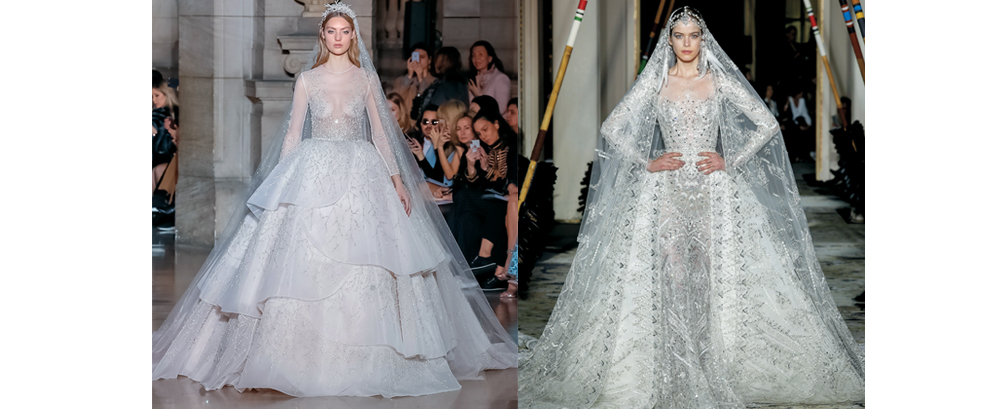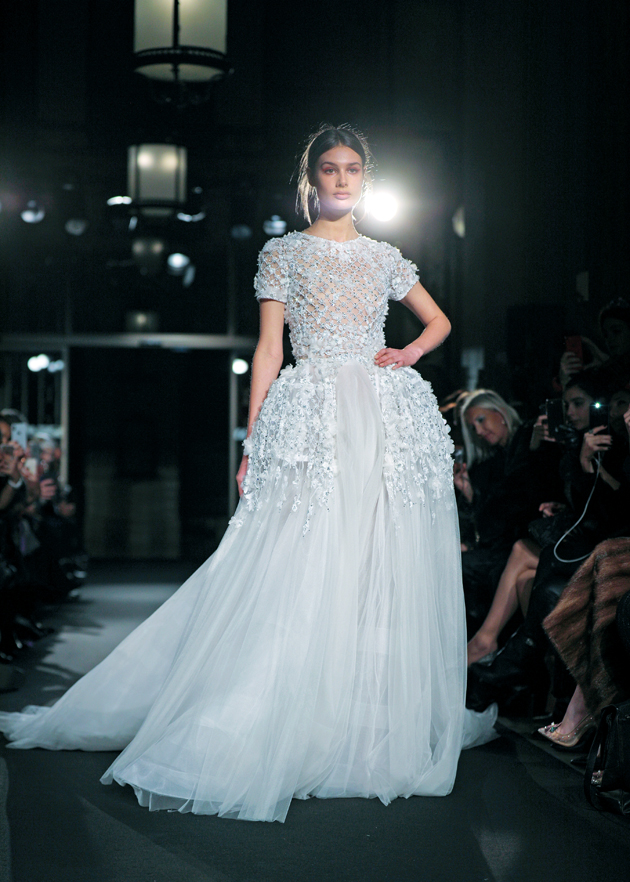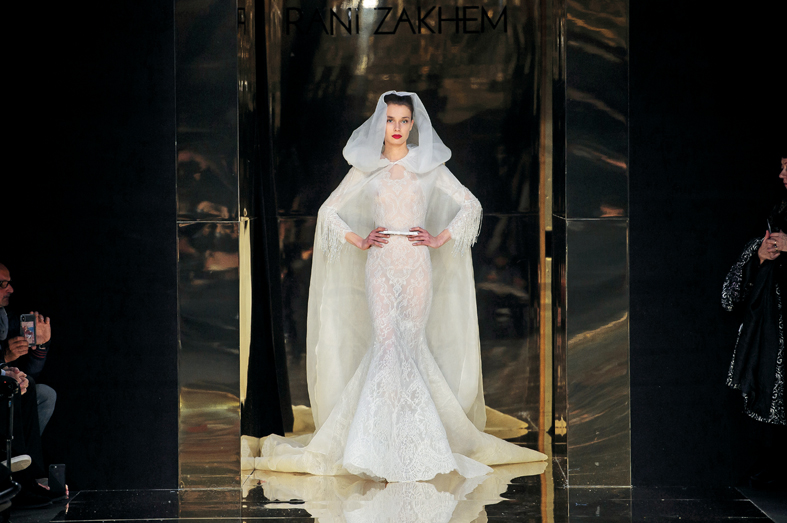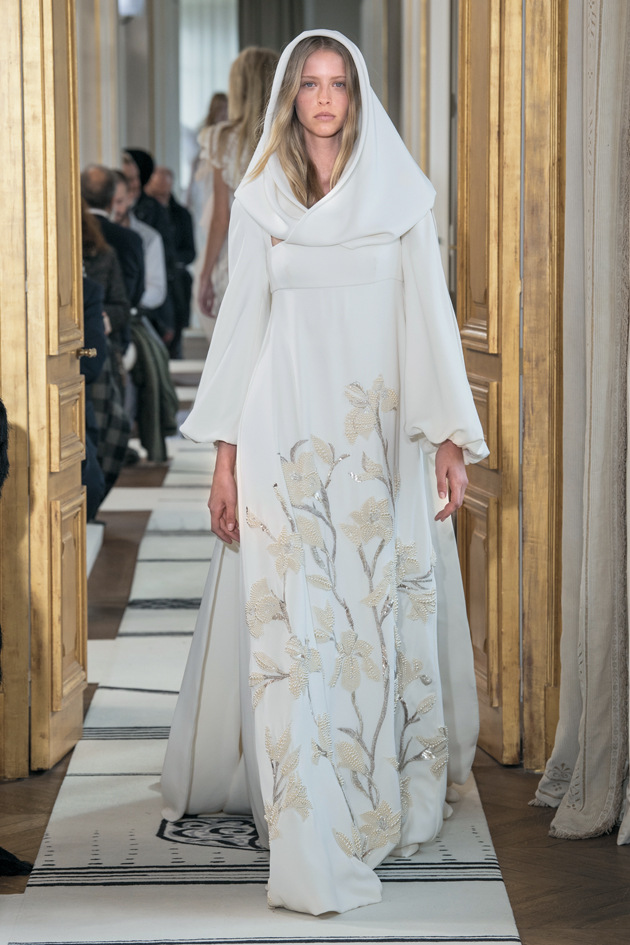Prestige issue 290, June 2018
The ring on the finger, in the gilded cage, the rope on the neck … all the phrases commonly attributed to marriage, but which one would better define conjugal union? If we believe these expressions, we would rather discard marriage, as they mention cage, rope, ring that squeezes and grips … bars. And yet, the marriage bond is an art. Sublime as well by its quintessence as by its rejoicings. Created by God for the true happiness of the couple. A life inside life. What did we do with it? Is it a dream today to seek a love that is not a flash of fire but that holds all life? A love that grows and matures over the years, without taking anything away from the joys of a married life? Is it not our dream to find great love, and to keep it? The dream of one day wearing a queen’s dress, a little diamond to decorate the hand, and especially to share life with a soul mate? Much more than a dream, marriage is a beautiful reality. It’s up to us to know how to seize it. Come on, still today love is touring. Ring, ring, peal, and proclaim aloud: «Together we are at our best». Round up of major wedding celebrations.

Ways and Customs
Between tradition and modernity
The hand request
Even today, to get married, the young man must ask the hand of his beloved to her father. With one difference, in the past the girl did not meet her husband until the wedding day, and it was up to the father to accept or refuse the request.
The ring
Symbol of love, union and fidelity, the exchange of rings between the bride and groom dates back to the old age. The alliance was made of iron, later became in gold. In the 3rd century BC, the Greeks wore the alliance to the left annular, the finger which, according to them, is linked to the heart by the vein of love. The Romans perpetuated this tradition by calling this ring finger a golden finger, and the Egyptians respected this belief. However, Spain, Poland and Germany have so far made an exception to this rule by bringing the alliance to the right annular.
Poems and dances
Before the celebration of the wedding, a festival was held in Lebanese villages, that lasted several days. Contests of poems, «zajal» or «ataba» in particular, were disputed between men, and everyone, men, women and children indulged in dabke, danced to the rhythm of the «mejwiz», the double flute.

Wedding dresses each woman dreams about…
The woman to the man’s left
This tradition dates back to the time when the groom was kidnapping his chosen, putting her on his left shoulder while he was fighting against the other contenders, with a sword in his right hand. Even today, during the nuptial ceremony, the woman always stands to the left of the man.
The bachelor party
In the Vth century BC, The Spartans celebrated the last evening of celibacy of the future groom around a good meal. Nowadays, the young man is still burying his single life during a festive evening with his friends.
The henna night
This tradition takes place the day before the wedding, in the absence of the bridegroom. The girl shares the day with her family and friends, and in the evening, they celebrate together the night of henna. Specific songs and dances mark the ceremony that continues until dawn. While the guests decorate their hands and feet of this coloring powder, the single friends are trampled by the girl, auguring sign of their upcoming marriage.

Horns
During the XIVth century, when people thought the marriage was bad, they rushed on the procession making as much noise as possible. From where was born the tradition of the horns, perpetuated until our days by the traditional parade of the bride by car in the street.
The rice throw
An ancient pagan rite is at the origin of this tradition. Throwing grains of rice on newlyweds is a symbol of prosperity and especially fertility that would be transmitted to them through these grains.
The throwing of the garter
The throwing of the garter is for men with a “free” heart. The groom raises the dress of his sweetheart, removes the knotted garter above his knee and throws it to future candidates. Whoever catches it first will get married in the year.
Yeast dough
After the wedding celebration, the new groom carries his wife on his shoulders to the marital home. There, she applies a paste of yeast on the door before entering. So the bride, stuck in her husband’s house, will be an excellent housewife.

A look in accordance with the big day
The wedding dress
Sacred and consecrated white by tradition, symbol of purity and light, this year it is more poetic, ultra feminine and ultra romantic. Silk crepe, tulle, lace … this timeless lace, with its vintage and classic look that never goes out of style, and plunging necklines all feminine and sensual.
The veil
What would the bride be without her veil? Short or long, it is the unmatched piece of the wedding dress that gives it a mysterious dimension. The veil was once a sheet that the man passed on the head of his chosen to express his desire to marry her. This tradition was maintained at the time of arranged marriages, when the groom had the opportunity to discover the face of his elected at the last moment, so that he did not have time to retract.
The bouquet
The tradition of the bouquet dates back to the Middle Ages, at the time of the Crusaders. It was composed of orange blossoms, symbol of purity and beauty of the woman.









